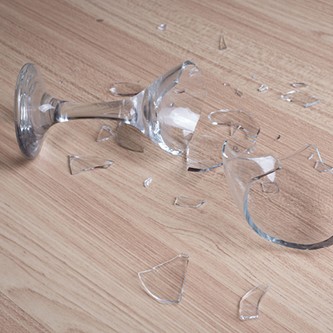英語記事に慣れる「サクっと読む英文」
2017.1.10
Why does Swiss cheese have holes?
Have you ever wondered how Swiss cheese gets its distinctive holes? Read the article to see what recent research has discovered.
スイスチーズにはなぜ独特の穴が開いているのか、不思議に思ったことはありませんか?最近の研究によって明らかになった事実について記事を読んでみましょう。

The mystery of the holes in Swiss cheese is finally solved. While many young children believe that the holes come from hungry mice, scientists long believed that the holes are caused by bacteria. Now that’s changed. New research by a team of scientists from Switzerland has revealed the cause of the famous holes in certain types of cheese.
The research shows that the cause of holes in Swiss cheese is not bacteria but, actually, very small pieces of hay. When milk is collected from cows to make the cheese at the farm, small pieces of hay, which is used to feed the cows, fall in. During the process of making the cheese, the holes grow bigger and the hay disappears. The scientists found that by adding more hay, they could increase the number of holes in the cheese.
For about 100 years, many people believed that bacteria were the cause of the holes, based on the research of the American scientist William Clark. In 1917, he wrote a report that said that the holes were caused by CO2 from bacteria in the milk. Now it seems that this isn’t the real reason.
The research also explains why in recent years Swiss cheese has fewer holes. People were not sure why the holes were disappearing from their cheese, but experts now believe that the reason is that the way of getting the milk to make the cheese has changed. The scientists explained that in the last 10 to 15 years the cheese making process has become cleaner. Before, the milk was kept in open buckets, but now the milk is kept in closed containers. This makes it less likely for pieces of hay to fall in.
In the past, the holes were a sign of imperfection, and cheese makers tried hard to stop them from appearing. These days, Swiss cheese is famous for its holes, and people around the world often imagine it when they think of Swiss cheese. Thanks to this research, cheese makers will now be able to carefully control the number and size of holes in Swiss cheese.
Many people wonder where the holes in Swiss cheese come from. Young children believe that the holes come from mice that like to eat cheese. And for a long time scientists believed that the holes came from bacteria. Now that’s changed. New research by scientists from Switzerland has shown the real cause of these holes in cheese.
The research shows that the holes in Swiss cheese come from very small pieces of hay. Cows eat hay, and when milk is taken from the cows to make cheese, small pieces of hay can fall into the milk. Then when cheese gets made, the hay makes holes. They grow bigger, and the hay becomes too small to see. The scientists learned that by adding more hay, they could make more holes in the cheese.
For about 100 years, many people believed that bacteria made the holes in cheese because of the American scientist William Clark. In 1917, he wrote a report that said that the holes were caused by CO2 from bacteria in the milk. Now it seems that this isn’t the real reason.
The research also explains why in recent years Swiss cheese has fewer holes. People were not sure why there were fewer holes in their cheese. Now, scientists believe that it’s because cheese making has changed. In the last 10 to 15 years, cheese making has become cleaner. Before, milk was not covered. Hay could easily fall in. But now the milk is covered. This makes it more difficult for pieces of hay to fall in.
The holes used to be a sign that Swiss cheese wasn’t perfect. So cheese makers tried hard to stop making holes in their cheese. These days, Swiss cheese is famous for its holes. People around the world often think of these holes when they think of Swiss cheese. Thanks to this research, cheese makers will now be able to control the number and size of holes in Swiss cheese.
キーフレーズ
mice ネズミ(mouse)の複数形
reveal 明らかにする
今まで知られていなかったことを明らかにする、という意味です。
例:He revealed his plans for the new building.
(彼は新しいビルへの計画を明らかにした。)
certain type of 特定の種類の、ある種の
hay 干し草
disappear (消えて)なくなる
be based on ~に基づいて
あることを根拠・基盤とする、または前提として考えを進めることを意味する表現です。
例:The movie was based on the short story of the same name.
(その映画は同タイトルの短編小説を基にしている。)
keep in ~に保管(保存)する
あるものをどこかに入れておいたり蓄えておいたりすることを意味します。
例:I keep my valuables in a safe.
(私は貴重品を金庫で管理している。)
likely for (someone / something) to ~ (誰か/何か)が~しやすい
sign of imperfection 不完全である証拠、不出来のしるし
these days 最近、近頃
現在、もしくは少し前から現在までの時期を意味する表現です。
例:I don’t watch much TV these days.
(最近テレビをあまり見ていない。)
類義語: nowadays, at present, recently
▼こちらもCheck!
“recently” や “these days” が指す「最近」って?


 【Gabaからのお知らせ】
【Gabaからのお知らせ】 【特集】
【特集】 【英単語の正しい使い分け】
【英単語の正しい使い分け】 【使いこなす句動詞】
【使いこなす句動詞】